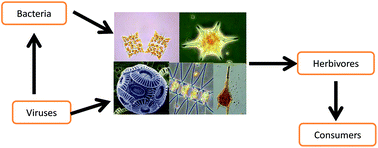Productivity of aquatic primary producers under global climate change
Abstract
The productivity of aquatic primary producers depends on a number of biotic and abiotic factors, such as pH, CO2 concentration, temperature, nutrient availability, solar UV and PAR irradiances, mixing frequency as well as herbivore pressure and the presence of viruses, among others. The effects of these factors, within a climate change context, may be additive, synergistic or antagonistic. Since some of them, e.g. solar radiation and temperature, vary along a latitudinal gradient, this perspective about the effects of global climate change on primary producers will consider ecosystems individually, separated into polar (Arctic and Antarctic), temperate and tropical waters. As coastal waters are characterized by lower light penetration and higher DOM and nutrient concentrations, they are considered in a separate section. Freshwater systems are also governed by different conditions and therefore also treated in their own section. Overall, we show that although there are general common trends of changes in variables associated with global change (e.g. the impact of UVR on photosynthesis tends to decrease with increasing temperature and nutrient input), the responses of aquatic primary producers have great variability in the different ecosystems across latitudes. This is mainly due to direct or indirect effects associated with physico-chemical changes that occur within water bodies. Therefore we stress the need for regional predictions on the responses of primary producers to climate change as it is not warranted to extrapolate from one system to another.


 Please wait while we load your content...
Please wait while we load your content...